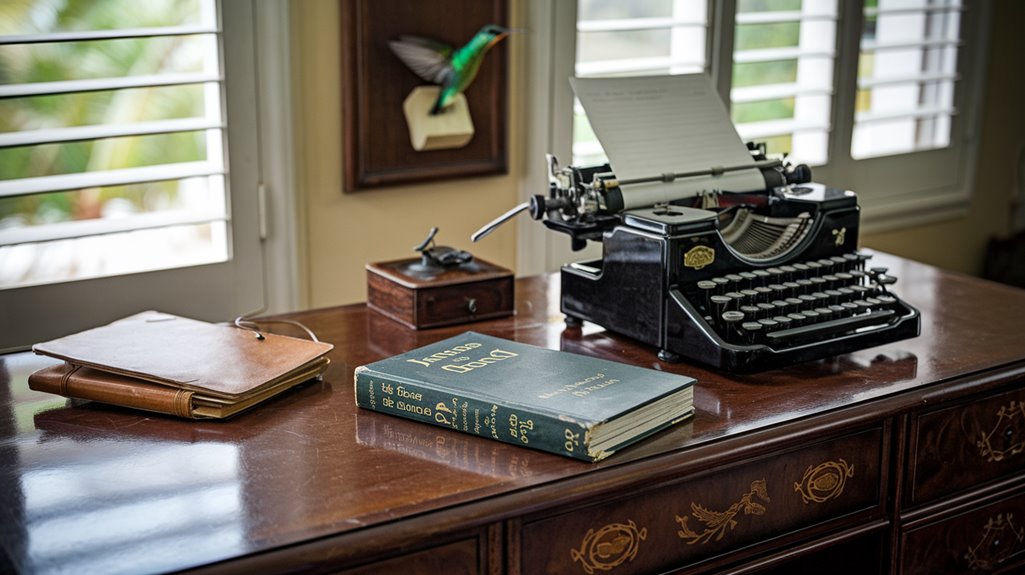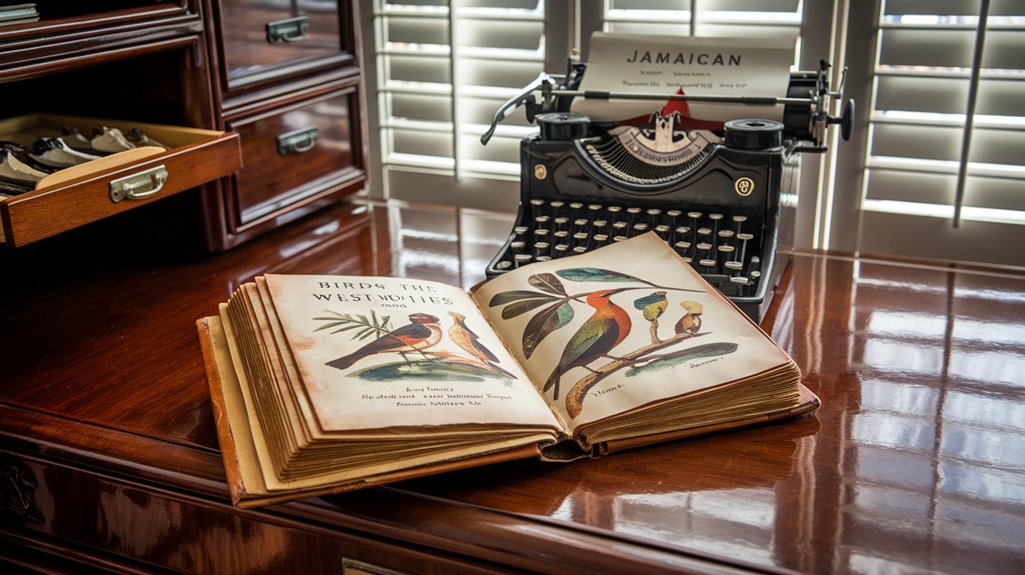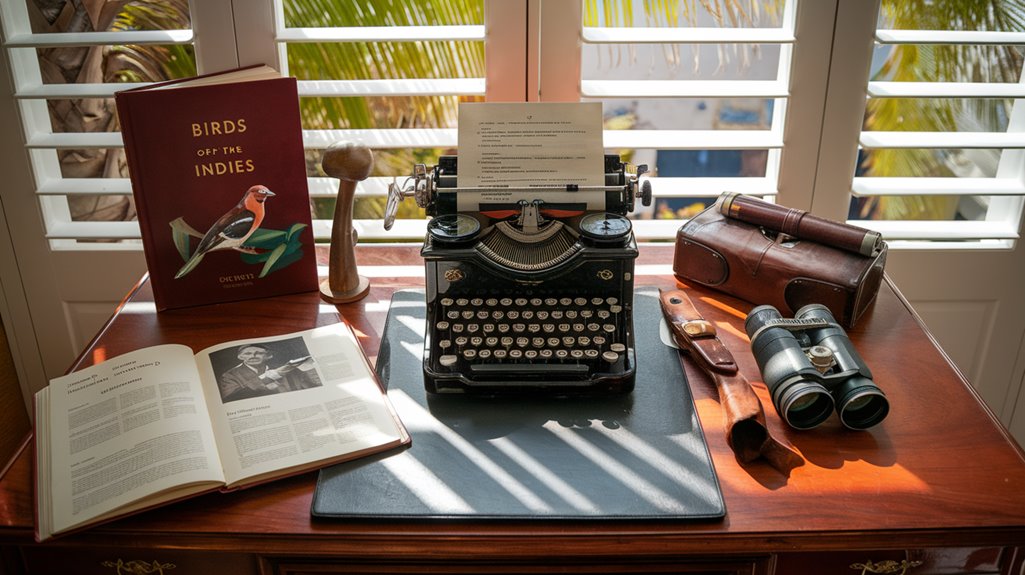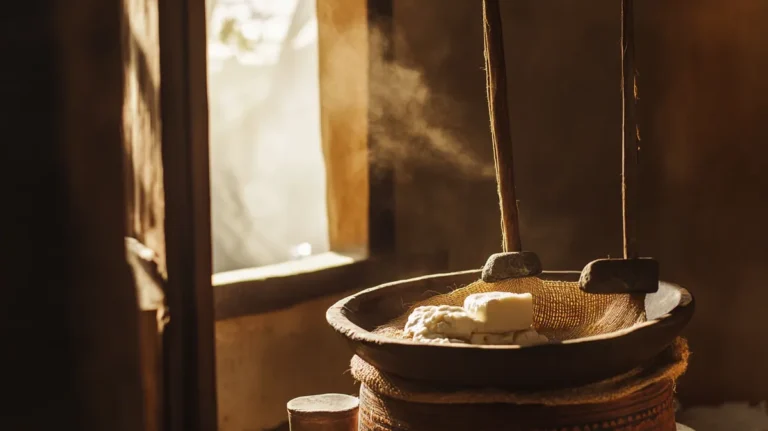Ian Fleming Took the Name James Bond From an American Bird Expert
You might think that 007's name was dreamed up in a top-secret MI6 meeting, but the truth is far more down to earth. While lounging at his Caribbean estate, Ian Fleming simply plucked the name from a bird-watching guide sitting on his coffee table. The author needed something ordinary and unmemorable for his spy protagonist – and an American ornithologist named James Bond unwittingly provided the perfect solution. What happened next would connect these two unlikely worlds forever.
The Discovery of a Plain-Sounding Name

When Ian Fleming needed a name for his soon-to-be-famous spy character, he deliberately sought the most ordinary one he could find. The name significance lay in its very plainness – he wanted something unromantic and masculine that wouldn't overshadow the story's events.
Fleming held onto this purposeful plainness, which both the original James Bond and his wife found amusing when they learned their name was being used. In his character development process, Fleming rejected more elaborate options like Peregrine Carruthers in favor of creating a neutral figure who'd serve as a blunt instrument for government operations. The author completed Casino Royale's manuscript in just over a month.
You'll find it interesting that the name came from an American ornithologist's field guide, "Birds of the West Indies," which Fleming owned and admired.
Meet the Real James Bond: A Life in Ornithology
Behind the suave fictional spy lies a fascinating real-life figure whose passion centered not on espionage but on birds. Born in Philadelphia in 1900, the real James Bond made his mark through ornithological discoveries in the Caribbean. His New England accent made him stand out during his field research.
After abandoning a banking career, he initiated birdwatching adventures that led to groundbreaking research at the Academy of Natural Sciences. He became the Curator of Birds in 1962 after decades of dedication to the field.
- Collected an impressive 294 out of 300 native Caribbean bird species
- Published the definitive guide "Birds of the West Indies" in 1936
- Established "Bond's Line," marking the boundary between North and South American birds
You'll find it amusing that when Bond finally met Fleming in 1964, the author tested his bird identification skills before giving him a copy of "You Only Live Twice" with a playful inscription acknowledging his borrowed identity.
How Fleming Turned a Bird Expert Into 007
Ian Fleming's quest for the perfect spy name ended at his Jamaica estate when he glanced at his cherished copy of "Birds of the West Indies."
The ornithologist James Bond's straightforward, Anglo-Saxon name struck Fleming as the ideal fit for his "blunt instrument" of a protagonist.
Fleming's inspiration transformed a humble bird expert's identity into what would become the world's most famous spy.
While working at his Goldeneye estate in 1952, he completed Casino Royale in just over a month, breathing life into a character that would transcend its ornithological origins.
You might find it amusing that this literary transformation turned a "geeky birder's" name into a symbol of sophistication and adventure.
When Fleming later met the real James Bond and his wife, they embraced the coincidence with good humor, as Bond found his unexpected association with naval intelligence work rather entertaining.
The character would go on to appear in twelve novels penned by Fleming before other authors continued the legacy.
When the Two James Bonds Finally Met
After the surprising discovery that James Bond's name had been borrowed, Bond's wife Mary took action by writing to Fleming about his unauthorized use of her husband's identity.
The meeting's significance unfolded in 1964 when the Bonds visited Fleming's Jamaican estate, where the ailing author had only months to live.
The encounter sparked mutual respect between these two distinguished men, beginning with Fleming testing Bond's expertise in Caribbean ornithology.
Born in Philadelphia, James Bond's expertise came from exploring over 100 Caribbean islands and authoring numerous scientific papers on birds.
You'll appreciate these fascinating details about their meeting:
- Bond proved his credentials by correctly identifying birds on Fleming's estate
- Fleming playfully offered his own name for Bond's use in return
- Both men shared a deep passion for Caribbean birds, despite their vastly different careers
The meeting humanized their unique connection, bridging the worlds of ornithology and espionage fiction.
His groundbreaking book Birds of the West Indies, published in 1936, established him as a leading authority on Caribbean avian life.
A Name's Journey From Science to Pop Culture

The remarkable transformation of James Bond from a respected ornithologist's name to a global pop culture phenomenon began with a simple moment of inspiration.
When Ian Fleming discovered the name in "Birds of the West Indies," he couldn't have predicted its cultural evolution into one of entertainment's most recognizable brands. The childhood book reading sparked Fleming's interest in the naturalist's work. Bond worked as curator of ornithology at the Academy of Natural Sciences in Philadelphia. The name's significance expanded far beyond its scientific origins, reaching its pop culture peak in 2002's "Die Another Day," which cleverly referenced the original Bond's bird guide.
You'll find the name's journey particularly fascinating as it bridges two distinct domains: the meticulous study of Caribbean birds and the glamorous sphere of international espionage.
While the fictional spy may dominate popular consciousness, the ornithologist's legacy continues through his influential work in bird conservation and research.










